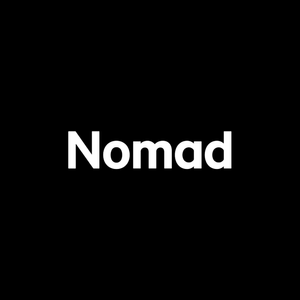
Sonic Boom: What's In a Name?

Andy Humphreys is the head of sound production at Nomad’s brand new audio department. With over two decades in the industry, you’ll be sure to have heard his work, whether it’s his British Arrow winning work for Lexus and T-Mobile, The Crystal Maze or his myriad of commercial work across screen and radio. Andy has also made a name for himself in the narrative space working with acclaimed directors including Michel Gondry, Seb Edwards and Aoife McArdle to name but a few. Starting his career as a live sound engineer, he soon moved into audio post-production at Silk Sound before becoming one of the pioneering cinema mix specialists in advertising at sister company, Space. Since then, he enjoyed a 16 year tenure at 750mph as board director and senior sound engineer and four years leading the sound department at Bark Soho before finding his home at Nomad.
I've been in this business a while and when I started, all of us advertising sound folk were referred to as 'sound engineers', all very nuts, bolts and spanners. In the long form world, it was 'dubbing engineers', pretty much the same frame of reference.
Then through the early 2000s the term sound designer started to gain favour, most likely inspired by the worlds of Hollywood and theatre-land.
Now the full list of titles in sound production includes sound recordist, sound effects editor, foley artist, ADR mixer, music editor, sound mixer, dialogue editor, sound supervisor, dubbing recordist, re-recording mixer and - one I'd like to add - sound artist (more on this later).
Okay so I know I've just pinched most of those titles from the world of feature films, but the point is to illustrate that in the short-form (largely advertising) side of the business most of us sound practitioners actually fulfil all of the above roles on a daily basis without breaking a sweat (on a good day).
This level of proficiency is taken for granted in the business, but it's a bit like briefing an architect on a project who then does the design, operates the digger, lays the bricks, plasters the walls and then paints the building! In essence we're a pretty versatile bunch.
But this is the joy of the work, with all the aforementioned variables the same level of attention is required whether the job is a straight voice record and edit, or if it’s a full sound design and immersive cinema mix.
As regards tools of the trade - just to extend the engineer analogy - our palate spans both the physical and virtual worlds and frequently weaves both together in endlessly intriguing ways. Sound sources from the physical side of things are anything that can be captured from the material world with a microphone, be it voice, foley (including bricks!) musical instruments, and ambient spaces and locations. The virtual world encompasses sound sources from samplers and synthesisers and any sound manipulated by a vast array if plugins and software packages that have flooded the market over the last 20 years.
Most of the sound design work is bespoke for any given project and some of my most memorable excursions include the sound capture of all the dancers overnight in an otherwise deserted Liverpool Street station for the T-Mobile flash-mob spot, closely followed by the wrangling of 250+ mic feeds for the follow up Sing-a-long ad in Trafalgar Square. Other less ambitious, but equally fun challenges included lining a room with plastic sheeting and then throwing full tins of paint everywhere to get that unique paint-splat sound, getting the approved plugin chain from Industrial Light & Magic to recreate Darth Vader's voice and recording Ozzy Osbourne together with Jon Culshaw impersonating Ozzy, then Ozzy turning to Jon in the booth and asking how to deliver a line as himself!! quote: "How do we say this?"
With all these techniques and tools at our disposal it has supercharged our design and mix skills. Such rich and diverse source material enables us to shift styles seamlessly, from the sugary-sweet to the darkly disturbing and all colours in between depending on whatever the job needs to make the required Impact. And thus to my earlier point of being re-defined as artists, this adaptability of style and interpretation to my mind is closest to being an artist (as in the world of the colourist) than just being a "designer".
But semantics apart, to me there's pleasure in all areas of the craft, whether it’s been the freedom of the short films I've designed and mixed for the likes of Seb Edwards, Chris Shepherd and Rebecca Manley, or the rigours of advertising and the long chain of inevitable approvals it takes to make an ad. I think both worlds inform the other, from the creativity and exploration of long-form to the discipline of the 6, 15 or 30 second spot.
If anything, versatility is the secret-sauce in today's topsy-turvy world, where you genuinely never know what the next brief will bring.
We've all seen massive change in our business and the landscape is barely recognisable from previous decades but, for me, the input of the creative is a constant, and I think it will remain so far into the future. This is where the joy is, whether in writing, directing, editing, animation, VFX, grading or sound. Vive the creative, whatever they are called!!













